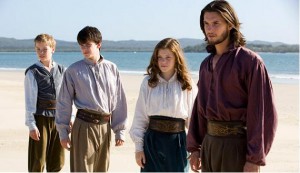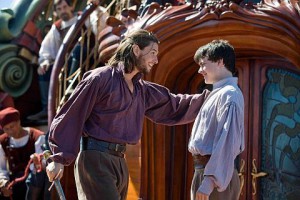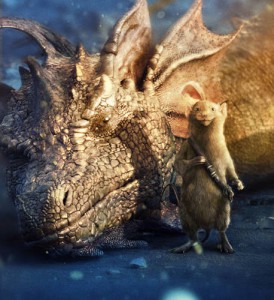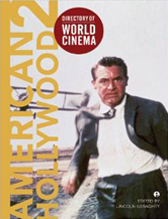
REVIEW: The Chronicles of Narnia: The Voyage of the Dawn Treader
While much discussion has focussed on the overt Christian symbolism within the Narnia series, the essential concept of the earlier films seems far more Freudian in nature. In The Lion, The Witch and the Wardrobe and Price Caspian the children flee their wartime reality only to encounter conflict in the magical realm. Far from offering a kind of fantasy escape, the imaginative landscape of Narnia merely provides an unconscious stage for the return of war and destruction in an altered form.
 Following the opening scene of The Voyage of the Dawn Treader where Edmund (Skandar Keynes) unsuccessfully attempts to enlist in the British army, the presence of the war seems almost incidental. Instead, the film contextualises the impetus for the magical journey as a flight from boredom, a condition that, in keeping with the theme of Freudian return, is eventually revisited upon the audience once the children reach Narnia.
Following the opening scene of The Voyage of the Dawn Treader where Edmund (Skandar Keynes) unsuccessfully attempts to enlist in the British army, the presence of the war seems almost incidental. Instead, the film contextualises the impetus for the magical journey as a flight from boredom, a condition that, in keeping with the theme of Freudian return, is eventually revisited upon the audience once the children reach Narnia.
For reasons not entirely clear, Edmund and Lucy (Georgie Henley), along with their cousin Eustace (Will Poulter), are transported back via a magical painting, and find themselves reunited with Prince Caspian (Ben Barnes), travelling the high seas aboard the Dawn Treader. Setting off in search of seven missing Lords and their seven magical swords the group venture toward the Lone Islands and the darkness that lies beyond.
Compared to its predecessors though, The Voyage of the Dawn Treader lacks a number of key dramatic ingredients. For starters, the central mission is hardly compelling; much of what transpires after the arrival of the children occurs mostly by chance. The lack of a defined source of evil also weakens much of the film’s appeal. A mysterious green mist is a paltry substitute for Tilda Swinton’s charismatically menacing White Witch. As with the lion-God Aslan, Swinton’s role in this film is virtually non-existent.
 Likewise, Michael Apted’s direction seems utterly indifferent to the character-centred conflicts within the narrative. In particular, the rivalry between Edmund and Caspian is completely underplayed. Besides one scene in which the pair lock horns over treasure and entitlement, that tension goes unexplored. Elsewhere, Lucy’s anxieties over her outward appearance and self-worth are highlighted briefly and then simply forgotten.
Likewise, Michael Apted’s direction seems utterly indifferent to the character-centred conflicts within the narrative. In particular, the rivalry between Edmund and Caspian is completely underplayed. Besides one scene in which the pair lock horns over treasure and entitlement, that tension goes unexplored. Elsewhere, Lucy’s anxieties over her outward appearance and self-worth are highlighted briefly and then simply forgotten.
The absence of a consistent or building drama is worsened by the Dawn Treader’s singular repeating motif; the annoyance brought to bear by cousin Eustace. Trading off his effete English mannerisms and constant complaints as a source of laughs, the film gradually sinks beneath a tide of grating and ineffective humour.
And this, more than the film’s direction is where the real problems with Dawn Treader lie. The screenplay, which essentially provides a tour guide description of events, trades away character for clumsy exposition and surface exclamation. Little if anything is left for the actors to emote or for the audience to infer, it’s all inscribed in prosaic Cliff Notes-style dialogue.
 Nowhere are these weaknesses more apparent than when a CGI creation delivers the singular empathetic (if somewhat mawkish) display in what is supposedly a human-centred adventure film. When one of the lead characters is inadvertently transformed into a dragon, he looks to the camera, speechless and afraid, and sheds a solitary tear. Needless to say, moments of silence or empathy are very much in short supply throughout this Narnia ordeal.
Nowhere are these weaknesses more apparent than when a CGI creation delivers the singular empathetic (if somewhat mawkish) display in what is supposedly a human-centred adventure film. When one of the lead characters is inadvertently transformed into a dragon, he looks to the camera, speechless and afraid, and sheds a solitary tear. Needless to say, moments of silence or empathy are very much in short supply throughout this Narnia ordeal.
On the basis of this outing, The Voyage of the Treader may mercifully turn out to be the final production in the Narnia series. And that’s a shame because it’s an inglorious end to what began as a promising and lively franchise.





RSS feed for comments on this post. TrackBack URI